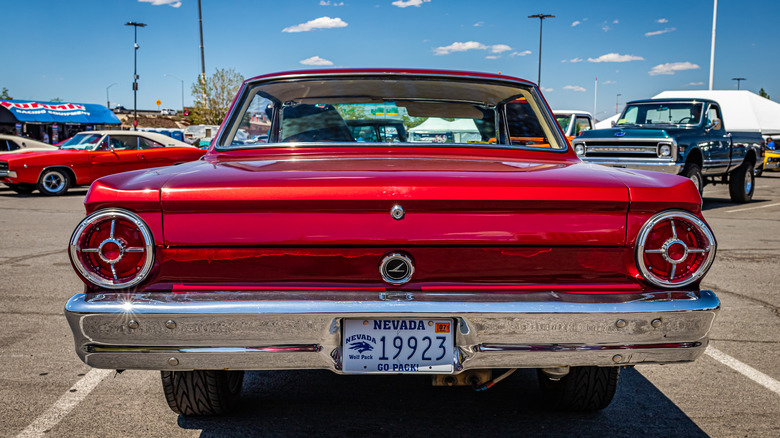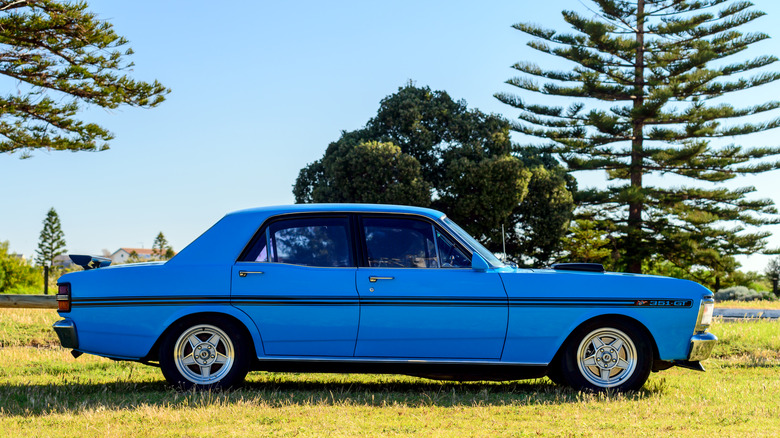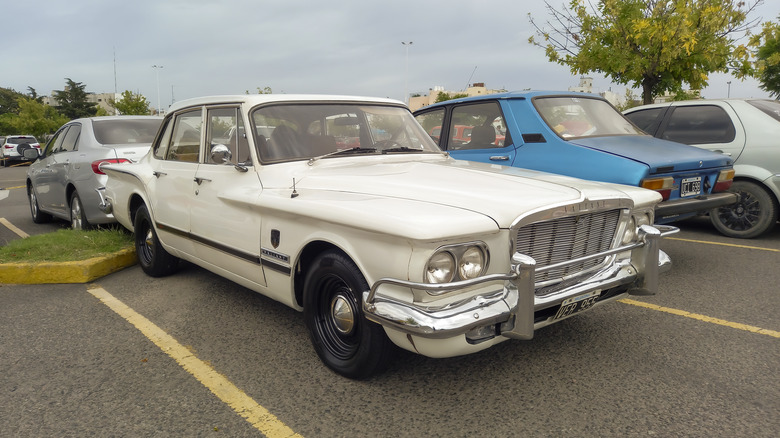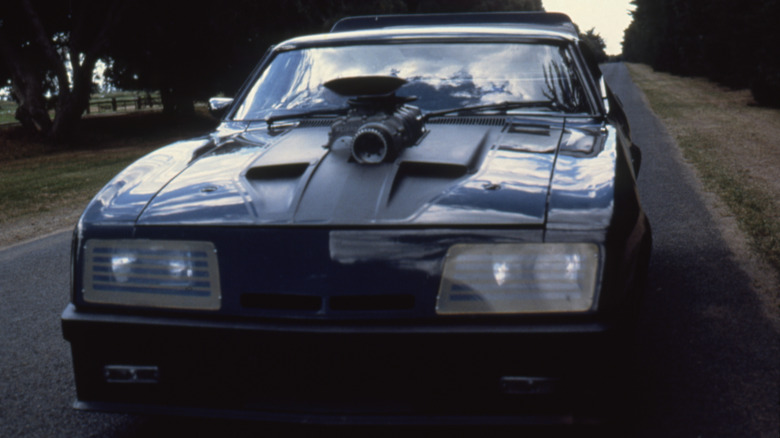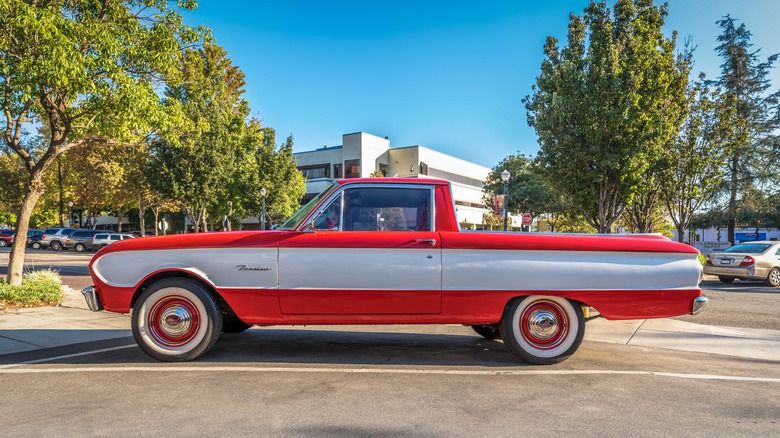5 Fun Ford Falcon Facts Every Car Enthusiast Should Know
A big launch, particularly of something as globally significant as a new model of vehicle, is rarely particularly smooth. The long-running Ford brand certainly has its share of experience with this phenomenon. The Falcon may not be the first model that car enthusiasts associate with Ford, with the iconic likes of the Thunderbird and (of course) the Mustang immediately springing to mind in its stead. Perhaps something of a humble little car in comparison, the Falcon nonetheless proved to be a fascinating introduction to the company's lineup and would have a lasting impact on Ford's business.
First revealed in September of 1959, the Falcon's modest dimensions marked an attempt to diversify the range and capture some more of the smaller-car zeitgeist that was wafting around the industry at the time. With this came affordability, more room for Ford to expand into the economic sphere. It may all sound quite simple and logical, but there's so much more to the history of the Falcon than that. Here are some fascinating facts about the vehicle and its creation that even seasoned car enthusiasts may not know.
Harsh Australian conditions proved very damaging for the Falcon (literally)
After World War II, the growth of Ford Australia was a hard-fought process. Victoria's Henry Bolte would sell Ford Australia some prime land in the Melbourne region in 1956, and along with the company's existing Geelong plant being renovated earlier in the 1950s, it was time for Ford Australia to introduce the region to the Falcon (boss Charles Smith canceled work on the Zephyr to do it).
This was the very same Falcon that arrived in North America at around the same time, and that was the issue. Though it had been extensively tested in its home nation, racking up a collective three million miles during the process, there wasn't time to really determine whether it was equipped to handle conditions in Australia. Global brands typically want to adapt their offerings to the region, but Ford really dropped the ball here.
How Stuff Works reported that then-New South Wales regional sales manager Max Gransden said the result was "front suspension and clutch problems from day one. The XK sedan was introduced with boulevard ride and [six-inch-wide] tires as standard equipment. The combination was totally unsuitable for Australian conditions." This particular Falcon model sorely underperformed there as a result. The Falcon Wagon, released as a sturdier alternative, served Australian motorists until 2010, and was succeeded by the Ford Mondeo.
Charlie Brown and his Peanuts friends helped to advertise the Falcon
Companies are always seeking effective ways to sell their products. One popular technique is wrangling a celebrity endorsement. Doing so grabs attention in commercials and lends a certain legitimacy to a product — a kind of "if it's good enough for Mr. T, it's good enough for me" appeal. For the Falcon, Ford managed to get true superstar A-listers on board: Charlie Brown, Snoopy and the rest of the Peanuts gang.
The characters were introduced, and Ford acquired the rights to use them for the Falcon's launch to 1965.They extolled the virtues of the Falcon family on billboards, in commercials, and wherever else they were found. "Go ahead, name another wagon that's easier to own than the new Falcon wagon, or easier to park, or easier to load," Charlie Brown demands of Lucy van Pelt in one of the commercials (above), before Linus walks by with a rather different wagon of his own.
In another spot, Snoopy performs a merry dance across the screen and Linus explains, "he's excited 'cause he just saw the new Ford Falcon." The narrator then boasts that the '61 Falcon features "... more power, more luxury, more comfort for six people, more of everything that has made it the world's most successful new car." Some of that success can surely be attributed to Charlie Brown.
Chrysler Actually Beat Ford To The Name 'Falcon' Originally
What's in a name? It turns out quite a lot. It becomes crucial parts of a product's identity, even if they may have sounded a bit silly at first (iPod and Nintendo Wii being but two examples). Though it seems superficial, it's a vital element to get right. With Ford's Falcon, something quite unfortunate happened: Chrysler had a Falcon first.
The Chrysler Falcon was a concept car unveiled in 1955, a roadster with two seats that, like so many concept vehicles, never saw the light of day. In this case, though, it wasn't intended as a one-off curio, but was a Hemi-equipped vehicle Chrysler originally planned to release. Even so, its existence was enough for the company to be able to lay claim to Falcon before Ford settled on the name.
What happened when Ford wanted to use the name? Well, the company asked. As Gary Witzenburg explained in the April 1984 issue of Motor Trend magazine, "both Ford and Chrysler were working on new economy cars called Falcon ... so Henry Ford II put on the charm and talked Chrysler into renaming its car."
It's a fun little anecdote, but nothing unusual. Witzenburg noted that Dick Harper, Advanced Marketing Plans Manager at Chrysler, said, "our legal department sometimes comes to us and says, 'Ford called and wants to use such-and-such. Do you want to release it?'" Chrysler's go-ahead led to the creation of two vehicle families: Ford's Falcon and Chrysler's Valiant.
It was Mel Gibson's ride of choice in the Mad Max series
Mel Gibson has certainly played his share of bold, brave, somewhat self-righteous characters. The formidable William Wallace of "Braveheart" is one well-known example, and who could forget Max Rockatansky of original "Mad Max" fame? It may be something of a cliche for a jaded man battling to uphold the rules in a lawless world, but he had distinctive taste in wheels. In both "Mad Max" and "Mad Max 2," Rockatansky's ride is a Ford Falcon GT coupe.
The Pursuit Special started as a standard GT coupe, though a Ford Mustang was also in contention originally. After that, it was time to customize the machine for the series' grim world. Peter Arcadipane was part of the team that added, among other things, eye-catching spoilers and an enormous 'show' supercharger, which was affixed to the back of the magnificent car.
Originally, Arcadipane told The National News in 2009, he had been working on a concept vehicle to unveil at the Melbourne Motor Show of 1977. He described it as "a kind of street racer that you'd expect to see on the track at Le Mans," a fascinating project he poured a lot of passion into. On its completion, transport that could accommodate it wasn't available, and so Arcadipane had to leap behind the wheel and take it to the motor show, "a valuable, unregistered, uninsured prototype, driving through busy Melbourne traffic, dodging cars, trams and shoppers and avoiding police."
It Was The Big Three's First Compact ... But Only Just
The notion that motorists might like a smaller, more efficient vehicle wasn't new when Ford first introduced the Falcon. In the United States in particular, however, it was still a novelty. The Nash Rambler, which arrived in 1950, was the first compact to launch in the nation. A neat little convertible measuring 176 inches long and 73.5 inches wide, it was 82 hp worth of plucky power. The following year, 80,000 were manufactured, more than tripling the output of the initial run.
There was a market for the compact, then, though the enduring nature and size of that market were still unknown factors. It was a risk that it took some time for the biggest names in the auto world to take. Of Ford, GM, and Chrysler, Ford was the first to introduce a compact. As Sports Illustrated noted in September 1959, though, "General Motors with the Corvair and Chrysler with its Valiant will also soon be in the compact-car act," all in the 1960 model year. The likes of the Corvair would find their own places in auto history.
The Falcon expanded the initial notion of a small, economy car. It was crucial to Ford's success in Australia as a full-size, and U.S. drivers would see options such as the Falcon Ranchero (a 2,365 cc, 91 hp pickup introduced as a compact option in 1960) emerge over the years.
